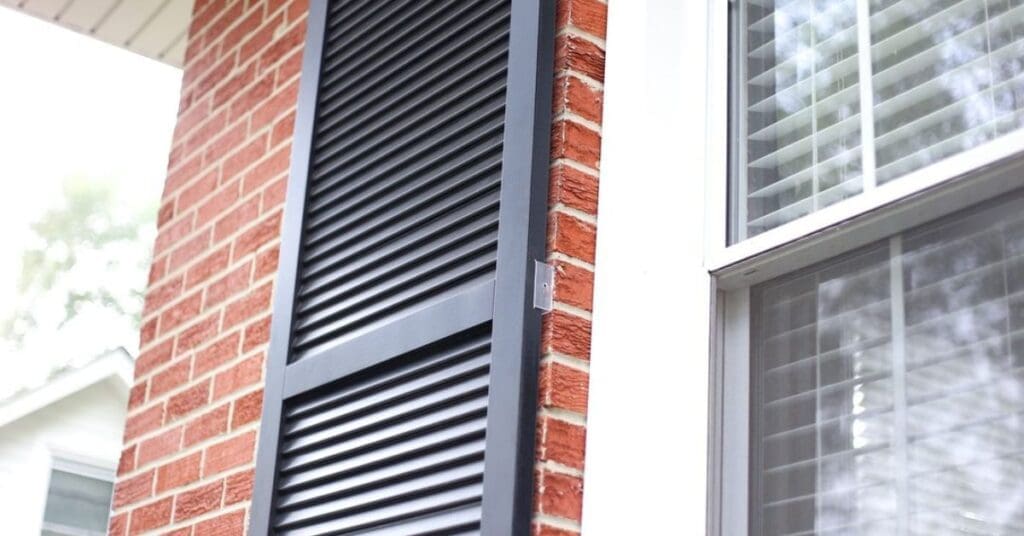Well-fitted shutters that complement your home’s architectural style can transform the entire look of your property. However, even the most beautiful shutters will look unprofessional if they don’t fit properly against your windows.
Accurate measurements form the foundation of a successful shutter installation, whether you’re working on a single window or your entire home. Use this guide to properly measure windows for a perfect shutter fit and enhance your home’s curb appeal.
Gather the Necessary Tools
Before you begin measuring, collect all the tools you’ll need. A steel measuring tape provides the most reliable measurements, as it won’t stretch or sag the way fabric versions would. You’ll also want a pencil and paper to record your measurements immediately after taking them.
A step stool or ladder is essential for higher windows, and having another person around to help you makes the process safer and more efficient. These basic tools will help you achieve precision for a professional-looking installation.
Decide on the Mounting Style
Your mounting choice directly affects where and how you take your measurements. Outside mounting attaches shutters to the exterior wall around the window frame, which accommodates windows with shallow frames or obstructions. Surface mounting offers flexibility for uneven surfaces or when you want to cover trim work completely.
Either style requires different measurement points, so make this decision before you start measuring. Your mounting preference helps ensure you gather the right dimensions for your specific installation.
Inspect the Window Frame
Take time to examine your window frame and the surrounding area before measuring. Look for handles, cranks, or decorative trim that might interfere with shutter placement or operation. Note any areas where the frame appears uneven, warped, or damaged, as these conditions may require special consideration during installation. Composite exterior shutters work well with various frame conditions due to their adaptable mounting options.
Measure the Width in Three Places
Width measurements require precision at three different points to account for any irregularities in your window opening. First, measure across the top of the window opening, then measure across the middle, and finish with the bottom measurement.
Record all three numbers, but use the smallest measurement for ordering purposes to ensure your shutters won’t bind or stick. Windows often settle over time, creating slightly different dimensions at various points. This three-point measurement technique helps you identify variations and avoid fitting problems later.

Measure the Height in Three Places
Height measurements follow the same principle as width measurements, requiring three separate readings for accuracy. Measure the height on the left side of the window opening, then the center, and finally the right side.
Again, record the smallest of the three measurements to ensure proper clearance for your shutters. Uneven settling or construction irregularities cause height variations that aren’t immediately visible. Taking multiple height measurements protects you from ordering shutters that are too tall for your opening.
Account for Surrounding Obstacles
Measure the space around your window to confirm there’s adequate room for shutter operation and hardware. Functional shutters need clearance space to swing open without hitting adjacent walls, downspouts, or other obstacles.
Check both sides of the window, and note any features that might limit shutter movement or installation. Consider the thickness of your chosen shutters and any hardware that extends beyond the shutter face. This step prevents surprises during installation and ensures your shutters can function as intended.
Double-Check Your Measurements
Accuracy improves dramatically when you verify each measurement at least twice. Go through your entire measuring process again, comparing your second set of numbers with your first. If you find discrepancies, take a third measurement to determine the correct dimension.
Pay special attention to your smallest measurements, as these determine your final shutter size. Double or triple-checking your work is a smart decision when properly measuring windows for a perfect shutter fit. This verification step takes only a few extra minutes and saves you from expensive ordering mistakes or installation delays.
Record Measurements Clearly
Write down each measurement immediately after taking it, using clear labels to avoid confusion later. Create a simple sketch of your window, and mark each dimension clearly on your drawing. Note which measurement is the smallest for both width and height, as these numbers determine your shutter size.
Include any observations about obstructions, mounting surface conditions, or special requirements. Clear documentation helps ensure accurate ordering and provides a reference during installation.
Check for Squareness
To check for squareness, measure diagonally across your window from one corner to the opposite corner, and then repeat this process with the other diagonal. Compare the two measurements—if they are identical or nearly so, your window is square. However, if the measurements differ, this indicates that your window is not perfectly square.
This step is an important factor to consider when ordering shutters, as adjustments might be necessary to ensure a proper and visually appealing fit. Taking accurate diagonal measurements at this stage saves time and effort during installation.
Add Allowances for Clearance
Different shutter styles and mounting methods require specific clearances for proper operation and appearance. Functional shutters need space for hinges, while decorative shutters may require different spacing considerations. Check your chosen hardware specifications to understand any additional space requirements.
Factor in seasonal expansion and contraction, especially if you live in a climate with significant temperature variations. Proper clearances ensure your shutters operate smoothly and maintain their appearance over time.

Consult Manufacturer Guidelines
Each shutter manufacturer may have specific measurement requirements or recommendations for their products. Review the guidelines from your chosen supplier before finalizing your measurements. Some manufacturers provide measurement worksheets or templates that help ensure accuracy.
Consult with the professionals at Monument Shutter Co. to learn the guidelines for our shutters. Following manufacturer guidelines helps ensure warranty compliance and proper fit for your specific shutter style.
Avoid Common Mistakes
Never rely on old measurements or assume windows are the same size throughout your home. Resist the temptation to round measurements to the nearest whole number, and avoid measuring over existing trim or obstructions that won’t be there when installing new shutters. Verify you’re measuring in the correct location based on your chosen mounting style, as inside and outside mount measurements are taken at different points.
Precision during the measurement phase prevents problems during installation and ensures your shutters look professional. Contact our team today to discuss your shutter project and get expert guidance on turning your measurements into the perfect exterior upgrade.









